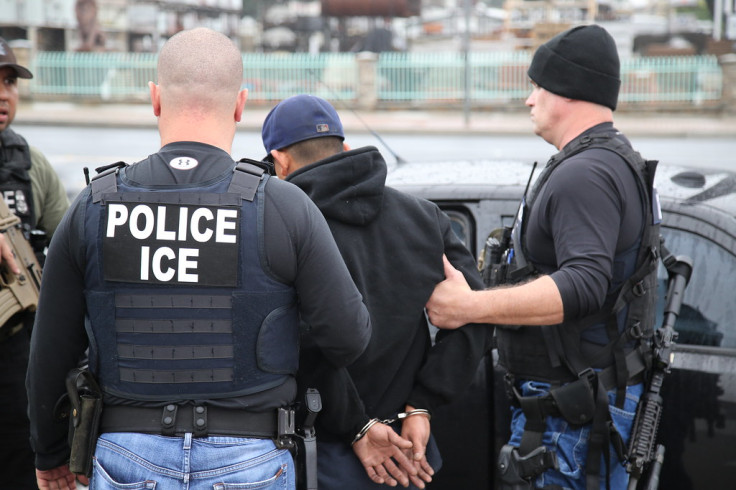
The United States Immigration and Customs Enforcement (ICE) has launched a blistering attack on New York City, accusing officials of protecting repeat-offender migrants and fuelling what the agency calls a 'revolving door' justice system that puts the public at risk.
The explosive clash erupted after ICE officers arrested Abdou Tall at Broadway and Canal Street in Manhattan. Tall, a Senegalese national living in the US without legal status, has a history of felony trademark-counterfeiting arrests.
Yet despite multiple detentions, ICE says he was repeatedly released back onto the streets rather than transferred into federal custody.
NYC's Sanctuary Policies Under Fire
According to the agency, Tall's case is a textbook example of New York's sanctuary policies allowing undocumented criminal offenders to slip through the cracks.
An ICE spokesperson said: 'Between sanctuary laws, bail reform, and soft‑on‑crime politicians' refusal to work with ICE, New York has become a revolving door for criminal illegal aliens to terrorise the city's neighbourhoods.'
Sanctuary laws represent a set of policies implemented by various cities and states aimed at restricting collaboration with federal immigration agencies.
Their aim frequently centres around safeguarding undocumented immigrants from deportation while fostering trust between immigrant communities and local law enforcement.
ICE's use of the term 'revolving door' highlights what officials describe as a recurring cycle. This happens when individuals are released from local custody, only to repeat their crimes or come into contact with federal authorities. It is a persistent pattern of arrests and releases.
Courthouse Arrests Raise Due Process Concerns
The criticisms extend beyond law enforcement to the judicial system. ICE has ramped up its arrests in or near immigration courts, a move that has drawn substantial opposition from legal aid organisations. An October analysis reveals that New York City recorded over 460 probable ICE arrests in courts in the first half of 2025, surpassing all other US cities.
These tactics, critics argue, compromise due process by steering individuals away from local proceedings and into expedited deportation in jurisdictions that may be less accommodating.
A federal judge has recently mandated that ICE enhance the conditions for detainees in its New York holding facilities, intensifying legal pressure on the agency. The judge has ordered enhanced capacity restrictions, improved sanitation measures, and more compassionate living conditions at the 26 Federal Plaza facility, following reports from detainees about sleeping on concrete floors and insufficient amenities.
Mounting Political Strain Over Immigration Enforcement
The situation is further complicated by political dynamics. New York City Mayor Eric Adams has expressed willingness to cooperate more with ICE, particularly for violent and gang-related crimes. His apparent shift has raised eyebrows among immigrant‑rights advocates, who warn that increased cooperation with the agency could threaten sanctuary protections.
The federal government has also pushed back. Earlier this year, the US Department of Justice filed a lawsuit challenging New York's Protect Our Courts Act. It is a state law that restricts immigration arrests at or near courthouses. Federal officials argue the law violates the Supremacy Clause by thwarting ICE's ability to detain dangerous individuals.
Effects Reach Far Beyond NYC Borders
The recent remarks from ICE highlights an ongoing national discussion surrounding sanctuary city policies, crime rates, and the enforcement of immigration laws. Supporters of strong local protections for immigrants contend that sanctuary policies build trust and protect vulnerable communities. Opponents counter that such protections can hinder the removal of serious criminal offenders.
As the conflict deepens, New York City faces a difficult balancing act to preserve its sanctuary city identity while responding to mounting pressure from federal authorities to prioritise public safety and crack down on repeat‑offender migrants.







